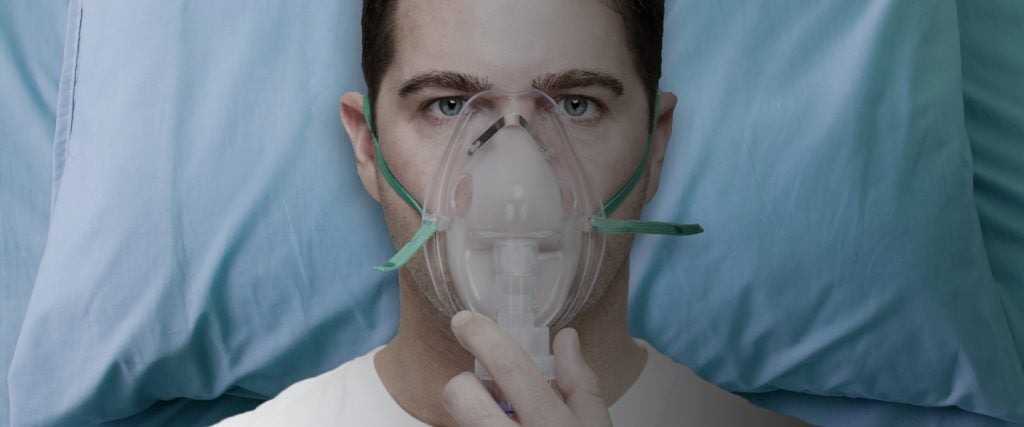All this time you’ve blamed your parents, your ex or your boss for your mental-health problems, when you should have been shaking your fist at the air. According to new research, the treatment for depression might be getting more oxygen into our sad brains, just not in the way breathy Wim Hof bros want you to believe. While the standard air we inhale every day is only about 21 percent oxygen, researchers found that when people were given supplemental oxygen, it made them happier and healthier.
“Some scientific data suggested that patients with psychiatric disorders, including depression, have abnormal respiration in brain cells that might originate from a limited supply of oxygen to some brain regions,” lead researcher Abed Azab tells me. “That’s why we speculated that increasing the amount of oxygen delivered to brain cells — even a slight increase — may lead to beneficial therapeutic effects.”
To test this theory, Azab and his colleagues recruited 55 adults with mild to moderate depression, ages 18 to 65. Half of the participants inhaled “oxygen-enriched” air, or air with 35 percent oxygen, with the help of a portable oxygen concentrator for seven to eight hours a night over the course of a month. The other half inhaled regular air at 21 percent oxygen for the same amount of time.
Depressive symptoms were measured before and after the course of treatment via something known as the Hamilton Rating Scale for Depression, a 17-item system designed to gauge the severity of depression that includes categories like mood, insomnia, physical complaints and general self-awareness. Researchers also used the Clinical Global Impression questionnaire before and after oxygen treatments, a 7-point scale mental-health professionals use to rate severity of depression relative to other patients they’ve observed.
Once the experiment concluded, the peer-reviewed study found that the group that received extra oxygen experienced a “significant” reduction in depressive symptoms. Overall, 69 percent of the participants experienced some level of improvement when they had supplemental oxygen, compared to only 23 percent of the control group.
The takeaway is that “even a tiny increase in oxygen availability to brain cells may have far-reaching effects on cellular function,” Azab says. However, the study admittedly has limitations, including a relatively small sample size. Azab recommends future research look at larger groups of people with more severe symptoms, and compare oxygen therapy to other antidepressant medications “head-to-head.” And although the oxygen provided in this study proved to be very safe, this “needs to be reassured in future studies,” he adds.
For these reasons, Azab is reluctant to recommend depressed people get their own oxygen concentrators, which are medical devices only available with a doctor’s prescription, and are typically employed to treat chronic respiratory diseases (or more recently, COVID). But with further data, he’s hopeful that oxygen therapy may be an option for those suffering from depression. (If that were to become the case, the concentrators could be prescribed by a doctor and potentially covered by insurance.)
The one work-around might be oxygen bars, which started in the late 1990s, were a trend again in the early aughts and are now expensive spa treatments — even though the FDA still considers oxygen therapy to be a prescription medication. They continue to exist in a legal gray area, mostly because there are few medical concerns associated with a 35 to 40 percent increase in oxygen in a short span of time. The bigger risk seems to be on par with a lot of quick fixes in the wellness industry — wasting your time and money on a bunch of hot air.
It’s why Azab once again emphasizes a need for more research, though he remains optimistic about the future possibilities. “It’s a first, but encouraging step in a long process that may prove oxygen treatment as a safe and useful treatment for depression,” he says.
And so, all we can really do for now is take a deep breath of regular air and wait.

